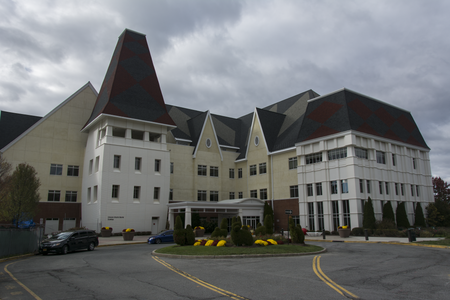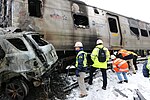Maria Fareri Children's Hospital

Maria Fareri Children's Hospital, a member of the Westchester Medical Center Health Network (WMCHealth), is the advanced care pediatric hospital for New York's Hudson Valley region and Fairfield County, Connecticut. Maria Fareri Children's Hospital is part of the Valhalla, NY campus of WMCHealth along with Westchester Medical Center and the Behavioral Health Center. It is home to hundreds of clinical and surgical pediatric specialists in almost every medical field. The hospital treats about 20,000 patients each year. The hospital cares for infants, children, teens, and young adults age 0-21 throughout upstate New York.As part of Westchester Medical Center Health Network, an academic health affiliate of New York Medical College, Maria Fareri Children's Hospital is also a major teaching facility.
Excerpt from the Wikipedia article Maria Fareri Children's Hospital (License: CC BY-SA 3.0, Authors, Images).Maria Fareri Children's Hospital
Woods Road,
Geographical coordinates (GPS) Address Phone number Website Nearby Places Show on map
Geographical coordinates (GPS)
| Latitude | Longitude |
|---|---|
| N 41.08608 ° | E -73.804877 ° |
Address
Westchester Medical Center
Woods Road 100
10595
New York, United States
Open on Google Maps






